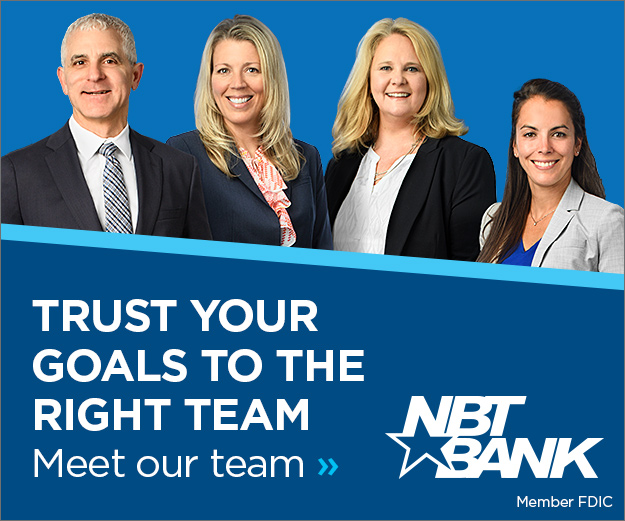The “body and soul” model of Jewish day school education…
By Cindy Mindell ~
ORANGE – Rabbi Enan Francis joined the staff of Southern Connecticut Hebrew Academy (SCHA) nearly three years ago, the first principal of both Judaic and secular studies in the school’s 65-year history.
The former New Haven Hebrew Day School was in transition when the then-32-year-old Francis arrived with his wife and two pre-schoolers. There was some institutional belt-tightening to take care of in the wake of the 2008 economic crash. The board shuttered the Beth Chana Academy High School for Girls and took other measures to remain viable.
Francis, who was ordained in 2001 from the United Lubavitcher Yeshiva in Brooklyn, came to the school with a Master’s degree in education from Yeshiva University and a decade of teaching experience. He’s still a committed student. “As an educator, I am committed to my own professional development,” he says. “For as long as I’m in education, I will always be in one course or another.”
Now the K-8 academy is thriving again, receiving grants for academic excellence and winning top awards in statewide and national science competitions. Rabbi Francis spoke with the Ledger about how he helped revive the school and where he hopes to take it now.
Q: Your entire professional career has been dedicated to education. How did you develop your passion for teaching and your educational philosophy?
A: I believe strongly, first and foremost, that every child can learn. Our job as educators, unequivocally and unapologetically, is to find the key that opens up every child to be successful. These are my own espoused principles and values, and form the bedrock of education.
I came to this way of thinking through my own experiences as a learner. I was a student, so I became a teacher. You have teachers who really inspire you, and you want to be like them. They turn on a light bulb in your mind and you become an information junkie, thirsty and hungry for more learning. Attached to that is the feeling you develop that you can be successful in learning.
There are educators who have their own standards and platform, but who look down to the student; the transmission of knowledge is downward. The student needs to work hard for the teacher, but the teacher is somewhat removed and is only a deliverer of information. That is not teaching. Teaching enables students to be learners.
At our school, we retain our teachers based on the degree to which they are helping our students become learners.
I began to teach very young and realized that there are rules and cultures that school administrators put into play. A teacher might find an ideological and cultural shift going on: your educational ideology may not be the cultural reality of the institution you’re teaching in, which leads to a chafing between teacher and institution. Often that’s where we see teacher burnout. For those teachers who want to take their own ideology to the next level and are passionate about teaching, the institution will put them in a pedagogical straitjacket. Teaching becomes more about producing test results, seeking tenure, keeping your job and keeping the principal’s job, and less about the children and the children as learners.
That was a reality that led me to realize that I wanted to get in there and make a difference, be a decision-making factor that would contribute toward students being learners – in fulfillment of that idea that all students can learn.
The secondary conviction that comes out of that philosophy is that it’s our job as educators and administrators, each on our respective level, to create that safe culture and climate for the students. That’s where the action in education is: we establish high standards, but ones that all students can reach and meet. Many schools set lofty standards, but won’t help the student reach them; if the student has difficulty, he or she will be told to get a tutor.
This approach derives from a Puritan ethic, rooted in the experience of the early American settlers, specifically in New England. But while we’ve created this notion of meritocracy, where kindergarteners are taking standardized tests and developing avoidance toward testing and the educational enterprise, we have to self-assess and ask, Is this good for children?
Q: What challenges did you face when you first arrived at SCHA?
A: In June 2009, the school was in transition. There was new leadership, new ideas, and it was a time of stress for some people, because we didn’t know where the school would go. Our basic philosophy then and now is, where are we now and where can we go?
The first priority was to develop social relationships among our staff and cultivate a team. We worked very hard to make every teacher feel really comfortable working with us and working together. Once the team bond was solidified, our focus was positive in that any idea was welcome; we cultivated an environment of “Let’s try it out.”
That’s that magic of education: if there’s team camaraderie and everybody feels valued, people don’t say, “We cannot;” they say, “Why not?” That has happened here. For example, one of the first things we decided, after I arrived, was that we wanted to develop our students’ Hebrew fluency. But in order to get our kids speaking Hebrew, we had to make sure that we could speak Hebrew. Academically, we all know Hebrew, but going to a café in Tel Aviv and ordering a salad and a croissant may be more challenging. First, we had to admit and face that problem and decide how to fix it.
We organized a summer Ulpan with Yeshiva University for our four core Judaic studies teachers, and they would carpool from Orange to New York City twice a week at 6:45 a.m.
Now, when you come into our halls, you hear our teachers giving directions to our kids in Hebrew. We teach technology as a tool of secular studies, but also to ensure Hebrew fluency. Together with my Israeli IT guy, we’re designing a keyboard skin to teach Hebrew typing.
When I first came to the school, I was very proud to talk about our one SMART board. Three years later, 90 percent of our classrooms have SMART boards, and we have another four in storage while we finish rewiring the school.
In both cases, our attitude was, This is something we’re serious about and want to make happen, so let’s make it our own and do it.
Q: Most Jewish day schools employ two principals, one for Judaic studies and one for secular studies. You serve as both at SCHA. How does that dual position serve the school’s approach?
A: On the organizational, structural level of the school, we don’t have to communicate two different agendas between two individuals who may not understand each other or one another’s culture and who see the school as two different entities. The two departments must compete for time and resources. Even in the best schools, it’s always very difficult to merge the two departments. The school is bifurcated, due to the fact that often a dayschool teacher has expertise in either one Judaic studies or secular studies.
I am in a better position to have our teachers and programs interact, to help the secular and Judaic merge seamlessly and be integrated in a meaningful way. For an educator, this is a very special opportunity and model. Judaic and secular studies go hand in hand, and a well-rounded Jewish dayschool student must succeed in both. It’s like the soul and the body: you can’t have one without the other.
This model is a better fit for the educational experience of our children. It’s more holistic, and strengthens us as one staff and one team.
Q: Now that you have established this new model, what is your vision for the school going forward?
A: With all the standards we have and the things we have to get done that make the gears in an institution continue to turn, I want us to always be asking ourselves if we are doing all that is good, healthy, and morally just for the children.
We will continue to strengthen that safe climate of inclusion that is challenging and multi-sensory, where the genius in every student has an opportunity to come out, where we’re not locked into one model of learning, and where every child can find expression.
Our stated vision is excellence in both secular studies and Judaic studies, which are equal and go hand-in-hand. What that means is that we see ourselves as professionals first and foremost and we practice professionalism to the degree that will take us wherever we need to go. We are constantly looking at ourselves and education and saying, What else can we do? What are others doing that we can try? We have standards, and we have standards for our standards that must be world class.
Our goal is to build our school and not to stop, but to continuously build our school for the excellence of educational experience for each and every child. I want each of our students to be able to say, I learned and I had a great experience. Each child is significant and must succeed any which way. This is non-negotiable. Our school is the home for any Jewish child, and we thrive most when we have children from across the Jewish spectrum. That is the beauty of our mosaic.
To learn more: www.schacademy.org








 Southern New England Jewish Ledger
Southern New England Jewish Ledger








